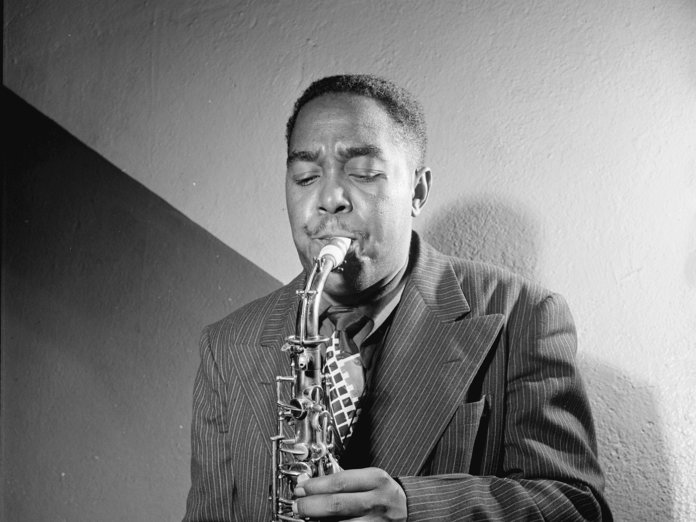Incredible as it might seem to us today, the recording industry’s near-total failure to document the bebop revolution of the 1940s was caused by industrial action. Twice during that decade the American Federation Of Musicians successfully imposed a ban on all commercial recording, in pursuit of an attempt to persuade record companies to compensate musicians for the threat posed by radio broadcasts to opportunities for employment in clubs and concert halls. Among the boycott’s principal victims were Charlie Parker, Dizzy Gillespie, Thelonious Monk and their comrades, whose music was captured scantily and erratically in the period in which they were propelling jazz into the future at warp speed.
Parker had made his first studio recordings in 1941, as a member of the Jay McShann Orchestra. His short solos gave vivid evidence that this was a 21-year-old musician with a radically different approach: hugely adventurous in his attitude to stretching harmony and subdividing rhythm, disdaining clichéd phrases and banal moods, setting puzzles for the listener. By the time he made his first recording for the Savoy label, as a member of the guitarist Tiny Grimes’s quintet in New York in September 1944, he had emerged as the totemic figure of a new idiom which was becoming a platform for virtuosos with a gift for the oblique.
Savoy was founded by the owner of a New Jersey electrical-goods store called Herman Lubinsky, who had spotted a market for records appealing predominantly to black audiences. By all accounts he was not a man inclined to generosity towards his jazz, blues and gospel artists. But at least he had the good sense to trust the taste of a group of keen-eared A&R men employed to scout, sign and supervise the recording of new talent.
Among them was Teddy Reig, who produced Parker’s first session under his own name for Savoy in November 1945. The six tracks featured a quintet billed as Charlie Parker’s Ree-Boppers, including a young and slightly unsteady Miles Davis on trumpet, with Gillespie occupying the piano stool and Max Roach on drums. Two pieces stick out in particular, both of them composed by Parker. One, “Now’s The Time” is a medium-tempo 12-bar blues based on a simple, swaggering riff recycled, four years later, into an R&B smash for Paul Williams, a saxophonist of baser instincts, under the title “The Huckle-Buck”.
The other, for which Davis stepped aside and Gillespie switched to trumpet, is “Ko-Ko”, a hurtling, high-velocity tune that encapsulated bop’s prevailing characteristic perhaps better than any other single recording: the fiendish technical complexity – more oblique angles than a geometry textbook, more weird accents than a Hungarian dictionary – intended to keep squares at bay. The speed and clarity of Parker’s articulation, his audaciously asymmetrical phrasing and the bittersweetness of his tone were all completely new, disconcerting his elders but irresistible to a legion of young followers.
A troubled sojourn in California – incorporating six months of treatment in a psychiatric hospital – took him away from the real action. On his return to New York in the spring of 1947 he resumed recording for Savoy, again under Reig’s supervision. A series of quintets featured the fast-maturing Davis with the damaged genius Bud Powell, John Lewis or Duke Jordan on piano, Tommy Potter, Nelson Boyd or Curley Russell on bass, and always the irreplaceable Roach on drums. The titles they recorded included Parker originals which became bop classics, including “Donna Lee”, “Cheryl” and “Steeplechase”. On one four-track session, released under Davis’s name, Parker switched to tenor sax, presumably at the trumpeter’s behest, in pursuit of a different front-line sound. It was a final Savoy session, in September 1948, that gave birth to one of his masterpieces: a medium-slow 12-bar blues titled “Parker’s Mood”, on which the altoist brought all his inventiveness and humanity to bear in a performance
of disciplined emotional intensity.
He had flown the Savoy coop by 1950 when Lubinsky, keen to exploit the new market for vinyl long-players, bundled together the Grimes, Parker and Davis sides, plus one track from a Bird-and-Diz concert at Carnegie Hall, into four 10-inch albums, released separately under Parker’s name and the title New Sounds In Modern Music – As Played By Its Creator, with a rather untypical portrait of a beaming and zoot-suited Parker on the front. If you wanted a set of the originals, you’d be fighting off Japanese collectors with very deep pockets. Instead, anticipating the celebration of his centenary this coming August, Savoy’s current owners have done a slap-up job of restoring the music and reproducing the original sleeves and labels, all enclosed in a stout slip-case.
Recorded in fairly rudimentary conditions, this music generally sounds its age. But if it’s true that Parker’s flame usually burned brightest in a live setting, inspired by a sense of competition, his Savoy studio masters – which his disciples bought on 78s and played at a slower speed in order to work out what it was that he was doing – are among the foundation stones of a movement that changed almost everything, marking the end of jazz as a purely recreational music.


